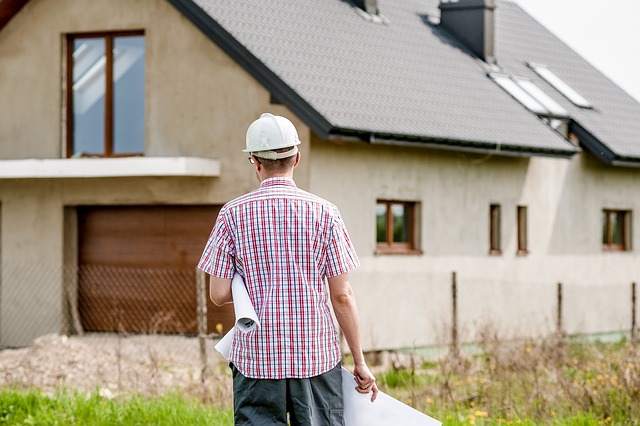When considering home repair and maintenance, particularly for windows, it's crucial to recognize that window replacement can greatly enhance energy efficiency and visual appeal while maintaining structural health. Regular inspections should identify signs of aging windows, such as drafts, condensation, or operational issues, indicating the need for an upgrade. The choice of new windows should consider the home's architectural style, local climate, and advancements in window technology that offer improved glazing options for heat loss reduction and noise intrusion mitigation. Homeowners must carefully select a reputable contractor and understand any necessary permits for the replacement process. The installation should be executed with care to prevent damage and ensure optimal performance against weather elements, with proper sealing and insulation. A final inspection by the contractor confirms that all adjustments are made for the windows to function correctly and be airtight. Ongoing maintenance is essential for maintaining the longevity and efficiency of new windows within home repair and maintenance routines. For those lacking expertise in this area, professional guidance is advisable to avoid future complications and to ensure the best possible installation. This approach to window replacement ensures that homes remain comfortable, energy-efficient, and well-maintained.
consider window replacement as an investment in your home’s energy efficiency, aesthetic appeal, and longevity. This article delves into the essential aspects of window upgrades for homeowners, from evaluating the necessity of new windows to mastering the art of their installation. By exploring ‘Assessing the Need for New Windows: A Guide for Homeowners,’ you’ll learn how to identify signs that indicate it’s time for a change. The subsequent section, ‘The Process of Window Replacement: Step-by-Step Insights,’ provides a clear roadmap for the replacement procedure, ensuring minimal disruption during home repairs and maintenance. Finally, ‘Ensuring a Successful Window Installation: Best Practices and Tips’ outlines the critical steps to guarantee your windows are installed with precision and care. With these insights, your home will not only boast enhanced performance but also a refreshed look that stands the test of time.
- Assessing the Need for New Windows: A Guide for Homeowners
- The Process of Window Replacement: Step-by-Step Insights
- Ensuring a Successful Window Installation: Best Practices and Tips
Assessing the Need for New Windows: A Guide for Homeowners

When considering home repair and maintenance, window replacement is a significant decision that can enhance energy efficiency, improve aesthetics, and ensure structural integrity. Homeowners should regularly assess their windows for signs of wear, condensation between panes, drafts, or difficulty in operation, all of which may indicate the need for new windows. Factors such as window frame material degradation, outdated designs, and technological advancements in window materials and glazing can also drive the decision to replace windows. It’s advisable to evaluate the window’s performance in terms of insulation values, as modern windows with double or triple glazing can significantly reduce heat loss and noise pollution. Additionally, considering the window’s compatibility with your home’s architecture and the local climate is crucial for long-term satisfaction and cost savings. Properly maintained windows can last for decades, but when they fail to protect against the elements or maintain a comfortable interior environment, it’s time to consider a replacement. Home repair and maintenance experts recommend that homeowners conduct these assessments regularly to prevent minor issues from escalating into more expensive repairs down the line. Regular inspections, coupled with professional energy audits, can pinpoint areas where new windows will have the most significant impact on home comfort and energy costs.
The Process of Window Replacement: Step-by-Step Insights

When considering home repair and maintenance, window replacement is a significant upgrade that can enhance energy efficiency and curb appeal. The process involves several key steps to ensure a seamless transition from old to new windows. Initially, homeowners should evaluate their current windows for signs of wear or inefficiency, such as drafts, condensation between panes, or difficulty in operation. This assessment is crucial for determining the need for replacement and selecting the most appropriate window type for the home’s architecture and climate.
Once a decision to proceed with window replacement has been made, the next steps involve choosing a reputable contractor, obtaining necessary permits if required by local regulations, and selecting the windows. Homeowners should opt for energy-efficient models that fit their budget and complement the style of their home. The installation process itself begins with the removal of the existing windows, which is typically done by carefully extracting each window component while ensuring minimal damage to the surrounding area. Subsequently, the new windows are prepared for installation, with attention to aligning them correctly within the window opening. Installation proceeds with sealing the windows into place, ensuring proper insulation and weather-stripping for optimal performance. Finally, the contractor will perform a thorough inspection of the work, making any necessary adjustments to guarantee functionality and airtightness before considerations of home repair and maintenance shift to regular upkeep and inspections to prolong the lifespan of the new windows.
Ensuring a Successful Window Installation: Best Practices and Tips

When embarking on a window replacement project, adherence to best practices is paramount for a successful installation that contributes to home repair and maintenance. Proper planning and preparation are key elements in this process. Begin by carefully measuring the existing window openings to ensure new windows fit accurately within their frames. This precise measurement reduces the likelihood of complications during installation. Additionally, select high-quality windows designed to withstand local weather conditions, enhancing both comfort and energy efficiency.
During installation, maintain a focus on attention to detail. Align the window units plumb and level to ensure optimal operation and longevity. Pay close attention to the sealing of the windows, as this is critical for thermal performance and weather resistance. Utilize insulating foams and weather stripping to prevent drafts and moisture intrusion, which can lead to future home repair needs. Lastly, consider enlisting professional assistance, particularly if you are not experienced with home repair and maintenance tasks. Their expertise can be invaluable in ensuring that the installation is executed correctly, thus avoiding costly repairs and maintenance issues down the line.
Homeowners looking to enhance their home’s energy efficiency, aesthetic appeal, and overall functionality will find that window replacement is a significant upgrade within the realm of home repair and maintenance. By carefully assessing the need for new windows through seasonal evaluations and understanding the signs of wear, such as difficulty in operation or noticeable drafts, homeowners can make informed decisions. The step-by-step guide provided ensures a clear path from selection to installation, emphasizing the importance of professional expertise to navigate this process effectively. With attention to detail and adherence to best practices during installation, new windows not only elevate the visual appeal but also contribute to more sustainable living conditions by optimizing energy usage. In conclusion, window replacement stands as a pivotal home repair and maintenance task that offers lasting benefits and should be considered a wise investment for any household.
